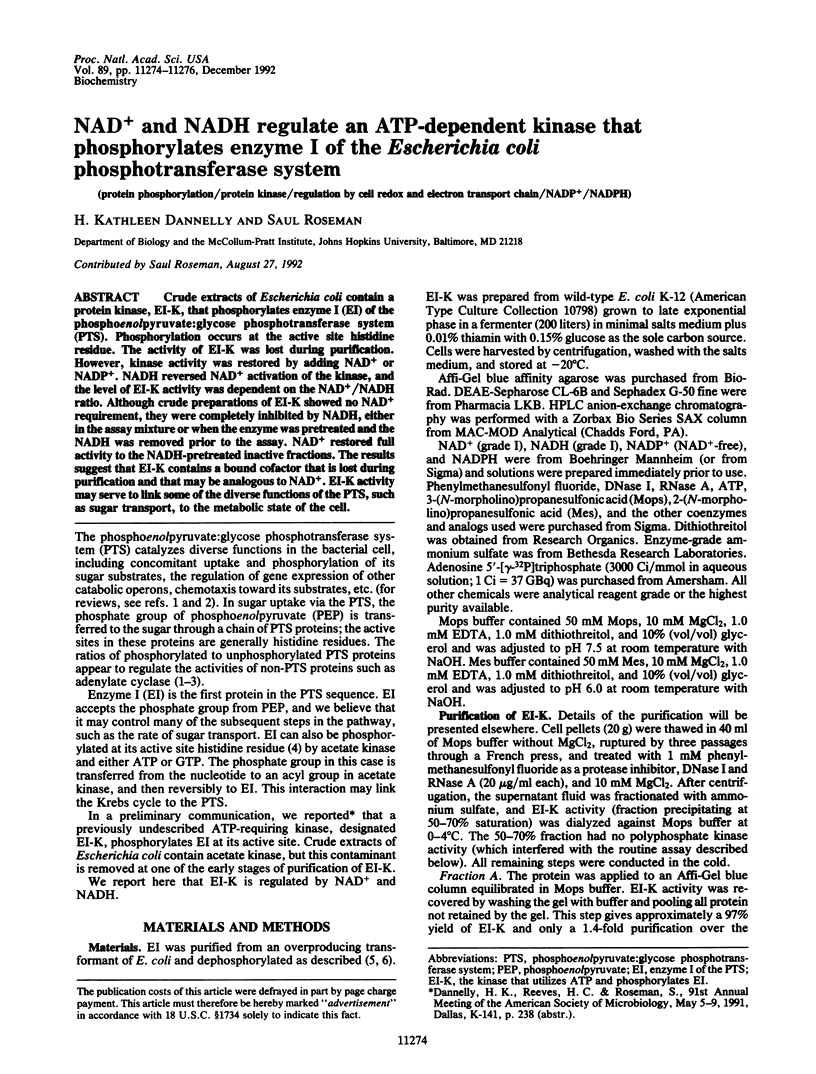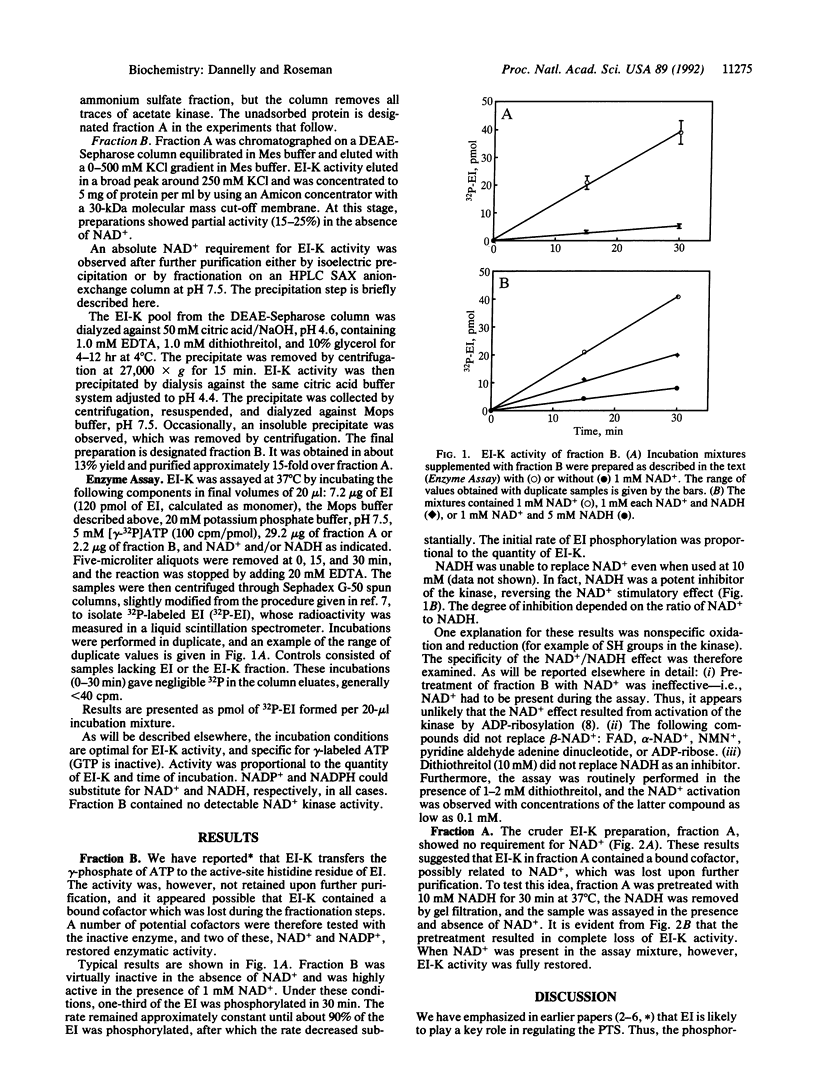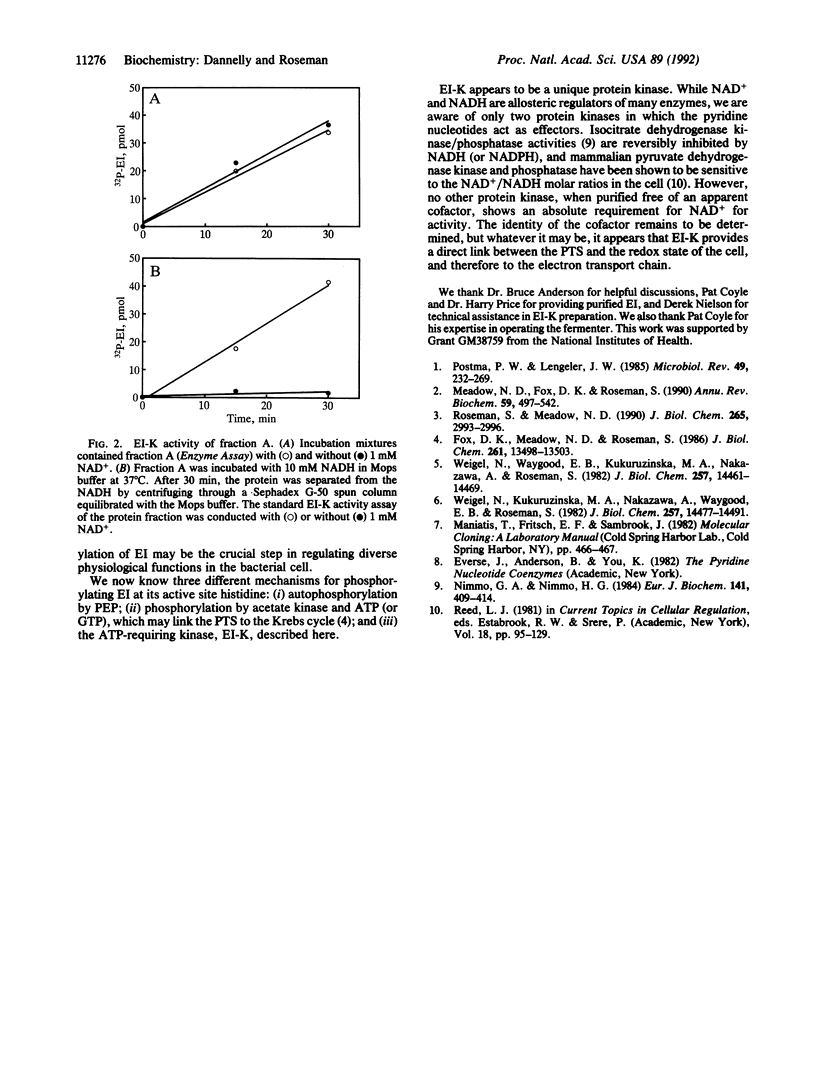Abstract
Crude extracts of Escherichia coli contain a protein kinase, EI-K, that phosphorylates enzyme I (EI) of the phosphoenolpyruvate:glycose phosphotransferase system (PTS). Phosphorylation occurs at the active site histidine residue. The activity of EI-K was lost during purification. However, kinase activity was restored by adding NAD+ or NADP+.NADH reversed NAD+ activation of the kinase, and the level of EI-K activity was dependent on the NAD+/NADH ratio. Although crude preparations of EI-K showed no NAD+ requirement, they were completely inhibited by NADH, either in the assay mixture or when the enzyme was pretreated and the NADH was removed prior to the assay. NAD+ restored full activity to the NADH-pretreated inactive fractions. The results suggest that EI-K contains a bound cofactor that is lost during purification and that may be analogous to NAD+. EI-K activity may serve to link some of the diverse functions of the PTS, such as sugar transport, to the metabolic state of the cell.
Full text
PDF


Selected References
These references are in PubMed. This may not be the complete list of references from this article.
- Fox D. K., Meadow N. D., Roseman S. Phosphate transfer between acetate kinase and enzyme I of the bacterial phosphotransferase system. J Biol Chem. 1986 Oct 15;261(29):13498–13503. [PubMed] [Google Scholar]
- Meadow N. D., Fox D. K., Roseman S. The bacterial phosphoenolpyruvate: glycose phosphotransferase system. Annu Rev Biochem. 1990;59:497–542. doi: 10.1146/annurev.bi.59.070190.002433. [DOI] [PubMed] [Google Scholar]
- Nimmo G. A., Nimmo H. G. The regulatory properties of isocitrate dehydrogenase kinase and isocitrate dehydrogenase phosphatase from Escherichia coli ML308 and the roles of these activities in the control of isocitrate dehydrogenase. Eur J Biochem. 1984 Jun 1;141(2):409–414. doi: 10.1111/j.1432-1033.1984.tb08206.x. [DOI] [PubMed] [Google Scholar]
- Postma P. W., Lengeler J. W. Phosphoenolpyruvate:carbohydrate phosphotransferase system of bacteria. Microbiol Rev. 1985 Sep;49(3):232–269. doi: 10.1128/mr.49.3.232-269.1985. [DOI] [PMC free article] [PubMed] [Google Scholar]
- Roseman S., Meadow N. D. Signal transduction by the bacterial phosphotransferase system. Diauxie and the crr gene (J. Monod revisited). J Biol Chem. 1990 Feb 25;265(6):2993–2996. [PubMed] [Google Scholar]
- Weigel N., Kukuruzinska M. A., Nakazawa A., Waygood E. B., Roseman S. Sugar transport by the bacterial phosphotransferase system. Phosphoryl transfer reactions catalyzed by enzyme I of Salmonella typhimurium. J Biol Chem. 1982 Dec 10;257(23):14477–14491. [PubMed] [Google Scholar]
- Weigel N., Waygood E. B., Kukuruzinska M. A., Nakazawa A., Roseman S. Sugar transport by the bacterial phosphotransferase system. Isolation and characterization of enzyme I from Salmonella typhimurium. J Biol Chem. 1982 Dec 10;257(23):14461–14469. [PubMed] [Google Scholar]


